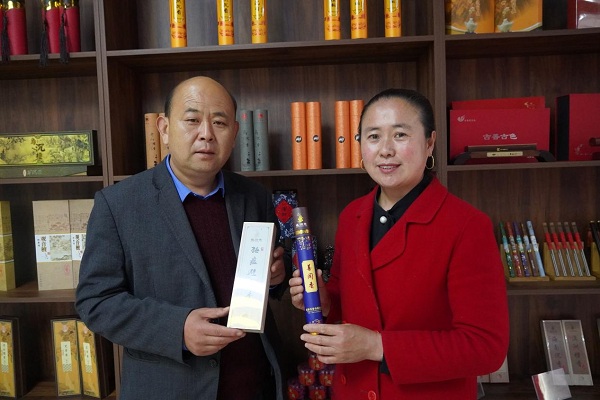Incense products from Shandong's county go global
Sanmiao village – located in the Shanxian county of Heze city in East China's Shandong province – is continuing to gain recognition as the "incense capital" of the country, thanks to its thriving incense production sector.
Every household in the village is involved in making incense, carrying forward a tradition that dates back to the late Yuan Dynasty (1271-1368).
The history of incense making in the village can be traced to Wu Jing, an imperial censor during the Yuan Dynasty, who settled in Shanxian county and pioneered the Wu family's incense business by blending folk incense-making techniques.
Over the generations, the craftsmanship has been refined, with the 19th generation now at the helm.
The village's incense-making tradition has even earned it a prized position on Heze city's municipal intangible cultural heritage list.
Initially a manual process, incense production took a leap forward in the 1980s when Wu Yudong, the 18th generation inheritor and his wife, Cui Yuxiang, invented incense-making machines inspired by a cotton hydraulic baling machine.
This innovation greatly increased production efficiency and quality.

Wu Yudong and his wife proudly shows their incense products. [Photo by Wang Xiaolan for chinadaily.com.cn]
Today, companies like Shandong Shengyuan Incense Industry Co Ltd and Lusheng Incense Industry Co Ltd have further industrialized Wu's incense-making, producing over 1,000 varieties of incense.
With multiple brand trademarks under their belt, the collective incense sector centered around Sanmiao village has seen its products reach not only every corner of China but also international markets – including the Netherlands, Thailand, India and South Korea – with exports accounting for 20-30 percent of their business. (Edited by Zhou Yunlai)








